It’s time for change.
While Millennials currently receive the lion’s share of business’ attention, there’s a new kid on the block – or kids to be exact.
Generation Z has arrived. And you’d be a fool to ignore them.
But who are the generation after Millennials, and how can you tailor your marketing efforts to reach them?
In this article, you’ll learn about Generation Z characteristics and preferences, and 10 vital strategies to use when marketing to Gen Z.
Post Contents
- What is Generation Z?
- Why Does Gen Z Matter for Your Business?
- 10 Vital Strategies to Use When Marketing to Gen Z
- 1. Your Business Needs a Purpose (Other Than Making Money)
- 2. Promote Entrepreneurial Values
- 3. Generate Loyalty Through Meaningful Interactions
- 4. Communicate in a Personal, Relatable Way
- 5. Optimize Your Mobile Experience
- 6. Understand That Gen Z Uses Social Networks Differently
- 7. Forget About Facebook and Focus on Snapchat
- 8. Create Snackable Content with a Focus on Video
- 9. Highlight Your Dedication to Privacy
- 10. Partner with Micro-Influencers
- Challenges When Marketing to Generation Z
- What Comes After Generation Z and What Generation Am I?
- Summary
- Learn More!



What is Generation Z?
The term Generation Z describes the generation after Millennials. Generation Z is also referred to as:
- Post-Millennials
- Homeland Generation
- iGeneration
What Age is Gen Z?
Although there isn’t an exact date range, Generation Z includes those born in the mid-1990s to the early 2000s.
More specifically, Gen Z is today’s teenagers and those in their early 20s. That means the oldest members of Generation Z are in college or just graduating.
→ Click Here to Launch Your Online Business with Shopify
For businesses, this is key.
It means that the generation after Millennials are starting to enter the workforce – and as their earning power increases, so will their buying power.
So, regardless of your niche market, Generation Z represents a huge opportunity for sustainable business growth.
Why Does Gen Z Matter for Your Business?
Gen Z – which includes today’s teenagers and young 20-somethings – currently makes up 25.9 percent of the U.S. population and is expected to account for about 40 percent of all consumer markets by 2020.
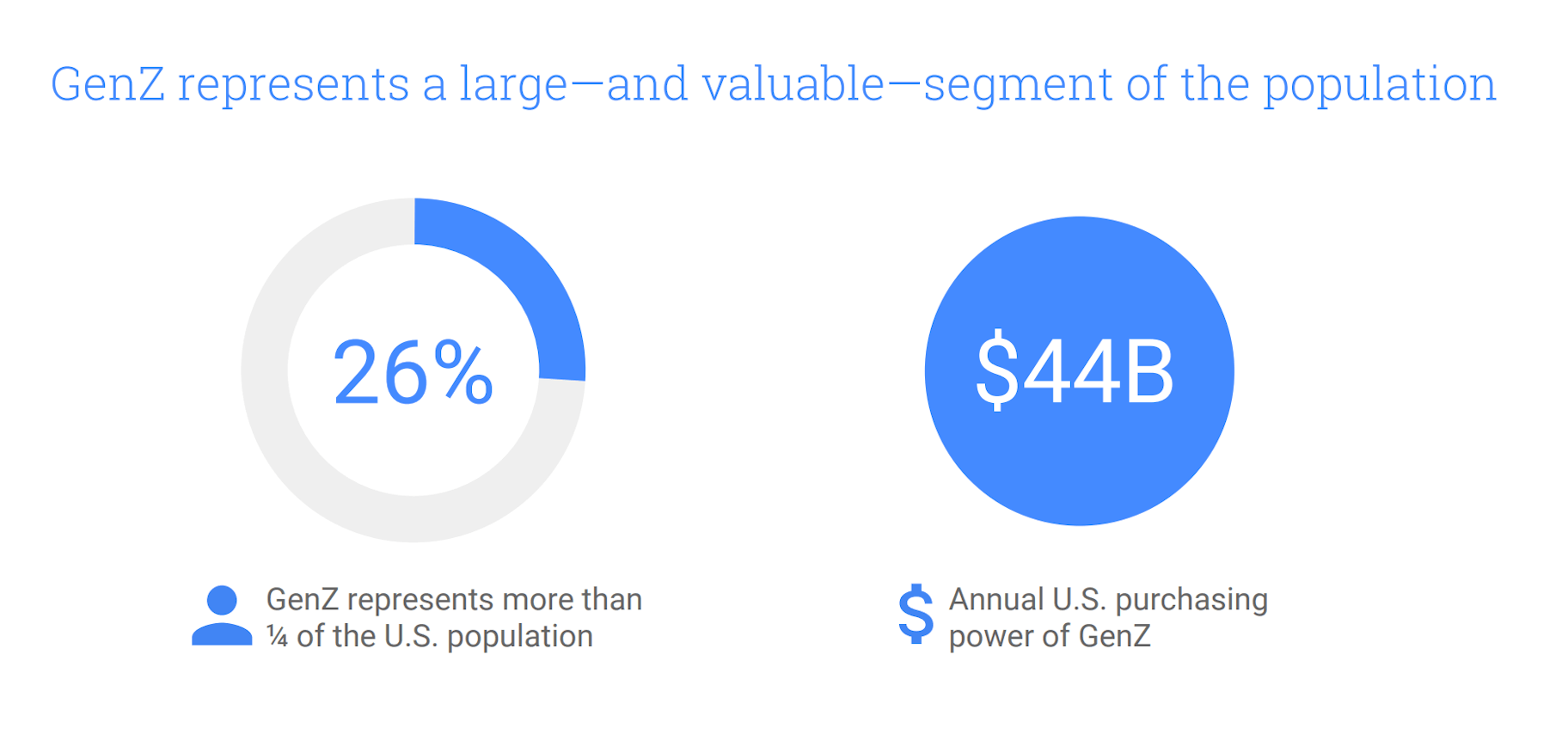
What’s more, it’s reported that Generation Z has $44 billion in buying power. But when you factor in their influence on parent and home purchases, their real spending power is closer to $200 billion.
Bottom line: Don’t undervalue Generation Z.
10 Vital Strategies to Use When Marketing to Gen Z
So you know who the generation after Millennials are and why they’re important to businesses.
Now, let’s dive deeper into the characteristics of this generation and the specific approaches you should take when marketing to Gen Z.
1. Your Business Needs a Purpose (Other Than Making Money)
Generation Z cares about the world.
They’re acutely aware of environmental, political, and socio-economic problems that societies face today.
And according to a study by The National Retail Federation and IBM, they’re “more serious about this” than any other generation. For this reason, 55 percent of Gen Z choose brands that are eco-friendly and socially responsible.
Why does Generation Z want companies to be socially and environmentally responsible?
Well, a study from Google found that teenagers want brands to be “a representation of their values, their expectations of themselves and their peers.”
So what does this mean for your business?
Well, Generation Z wants you to have a positive purpose that improves the world in some way.
Fair enough, right?
Consequently, any business out to make money regardless of the damage left in its wake runs the risk of being shunned by Gen Z.
So start with your core values and find a way to contribute to society and the world. Then, clearly communicate your purpose and values to Generation Z.
Ugmonk does this perfectly.
They’ve partnered with Rice Bowls to provide a meal for a kid in need for every product purchased.
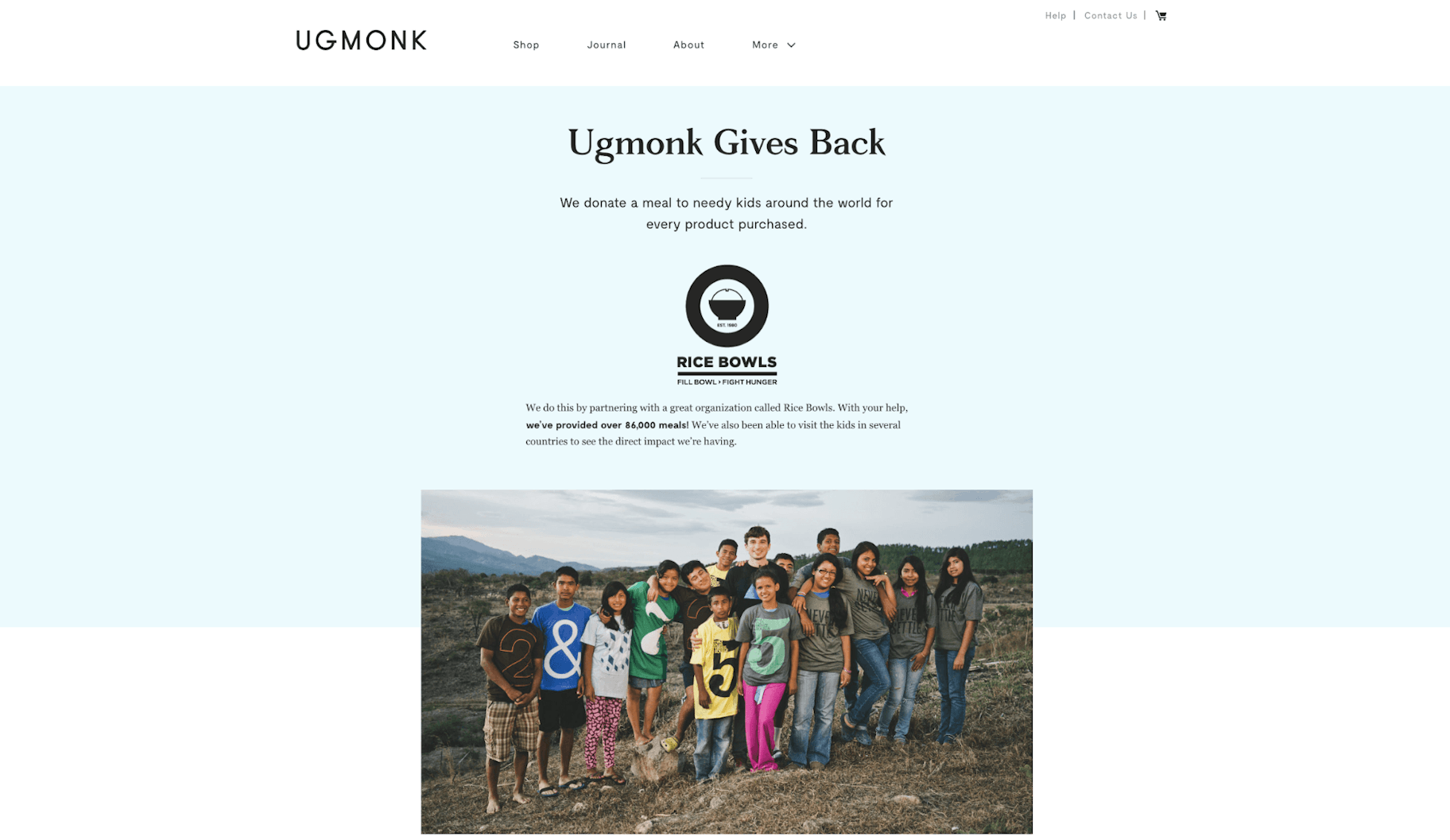
“We’ve received lots of great feedback from customers about our charity efforts,” explains Ugmonk founder Jeff Sheldon. “People like to know that part of their purchase is going to a good cause so it’s a win-win for everyone. It’s been fun to see so many of our customers embrace the cause and give very generous donations during our charity drives.”
But here’s the most crucial part: You can’t just say these things, you must live by them. Authenticity is key.
Another great example is TOMS Shoes.
For every pair of shoes bought on their website, they donate a pair to a child in need. This “One-for-One” campaign is exactly the kind of message that speaks to a generation that cares about improving the world.
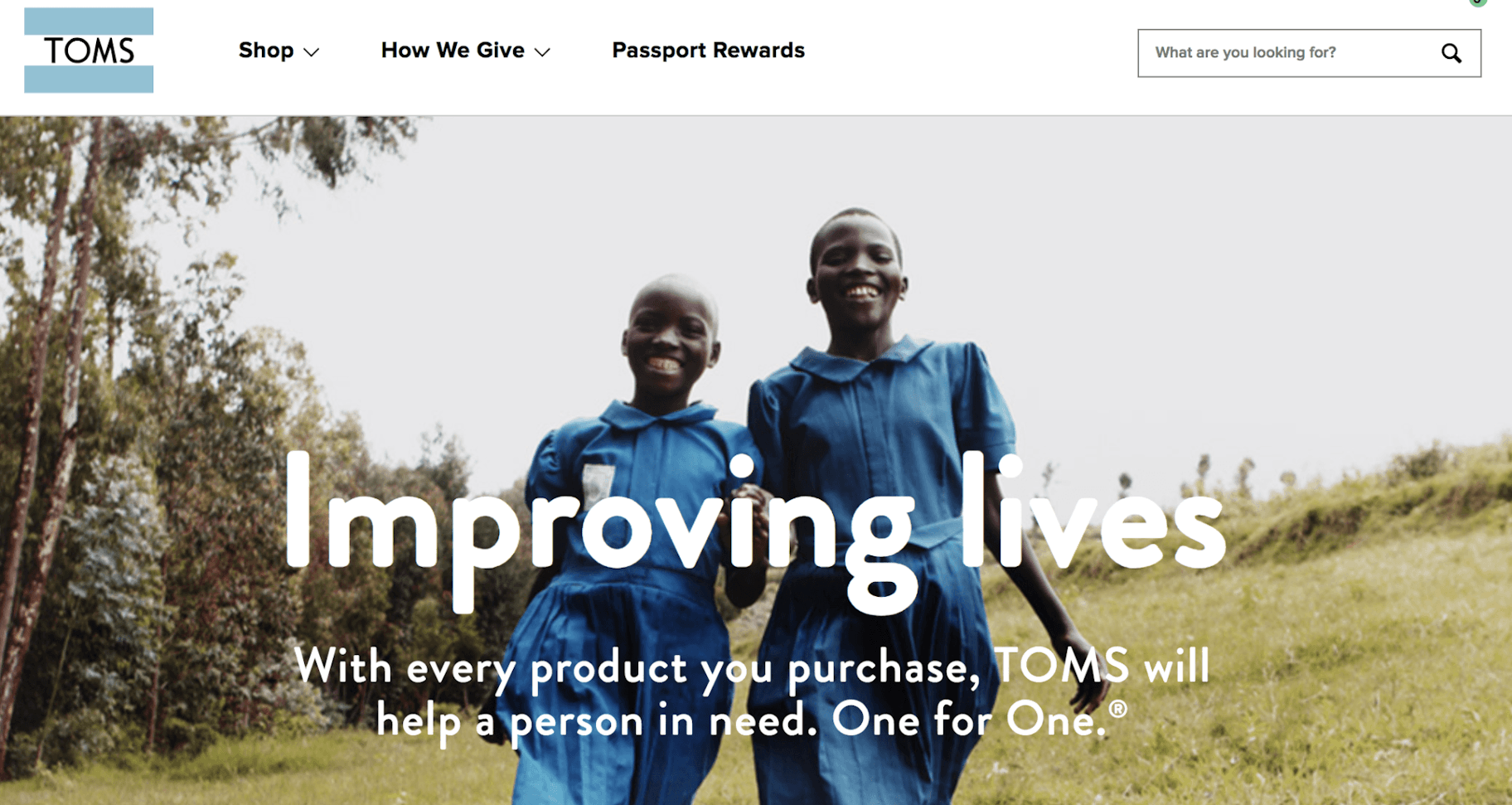
So, what’s your purpose and why does it matter to Gen Z?
2. Promote Entrepreneurial Values
The generation after Millennials grew up during the recession, witnessing the collapse of the housing market and their parents losing jobs.
They’re under no illusions that there’s no such thing as a completely secure job.
As Jacob Morgan, author of The Future of Work, says, “Job security is a complete myth, as is long-term employment. Companies lay off employees in droves…by the thousands! They just make sweeping cuts when they need to. The average employee tenure is under five years and for millennials, it’s under three years.”
Unsurprisingly, most of Generation Z want to take matters into their own hands. In fact, 72 percent of teens in the United States say they want to start their own business one day.
What’s more, 61 percent of this group wants to start a business directly out of college.
Generation Z also doesn’t value formal education as much as other generations do. They look at the astronomical increases in college tuition fees and ask, “For what?”
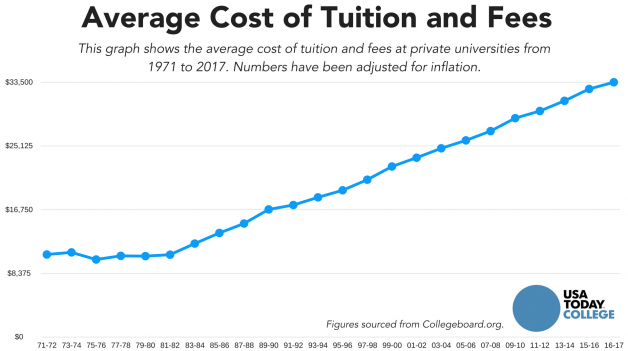
Generation Z is also acutely aware of how much can be learned online.
They’re adept researchers and self-educators – 33 percent watch lessons online, 20 percent read textbooks on tablets, and 32 percent work with classmates online.
It’s no surprise that only 64 percent of Generation Z plans to pursue a college degree compared to 71 percent of Millennials – a 7 percent decline.
Still, despite the increased distrust of formal education and job security, the generation after Millennials are optimistic about their future. More than half of Gen Z believe they are going to be better off than their parents.
So what does all this mean for your business?
Well, your target audience is extremely interested in running a business, so take them behind-the-scenes and show them how yours works.
Additionally, bond with Generation Z by emphasizing entrepreneurial qualities such as positivity, self-empowerment, determination, and resilience.
3. Generate Loyalty Through Meaningful Interactions
If it isn’t already, customer retention should be a large part of your marketing strategy.
This is because acquiring a new customer is anywhere from five to 25 times more expensive than retaining an existing one.
But retaining Generation Z customers will prove trickier than usual.
Take a look at the graph below from Statistica, which shows how Gen Z views brand loyalty compared to Millennials:

Gen Z is less concerned with brand appeal than Millenials.
Plus, according to a Lab42 survey, Generation Z consumers differ from Millennials in that they are less likely to be motivated by loyalty programs.
So you need to work extra hard to retain their business.
And one of the best ways to do this is through meaningful interactions.
Gen Z consumers are eager to interact with their favorite brands. More specifically:
- 42 percent would participate in an online game for a brand campaign
- 38 percent would attend an event sponsored by a brand
- 44 percent said they’d be interested in submitting ideas for product designs
- 36 percent would create digital content for a brand
So, host competitions, games, and events, and ask for ideas and feedback on product and brand designs.
Cultivate brand loyalty by meaningfully interacting with Generation Z in any way you can.
Which leads me to the next point:
4. Communicate in a Personal, Relatable Way
Millennials are less forgiving than other generations when it comes to tired old sales tactics and blatant attempts to manipulate customers.
Growing up with the internet and “fake news” has made them savvy.
So insincere “flash sales” and aggressive sales copy must be replaced with language that’s relatable and relaxed.
Take Domino’s Easy Order webpage. The way they write is instantly relatable to a younger audience.
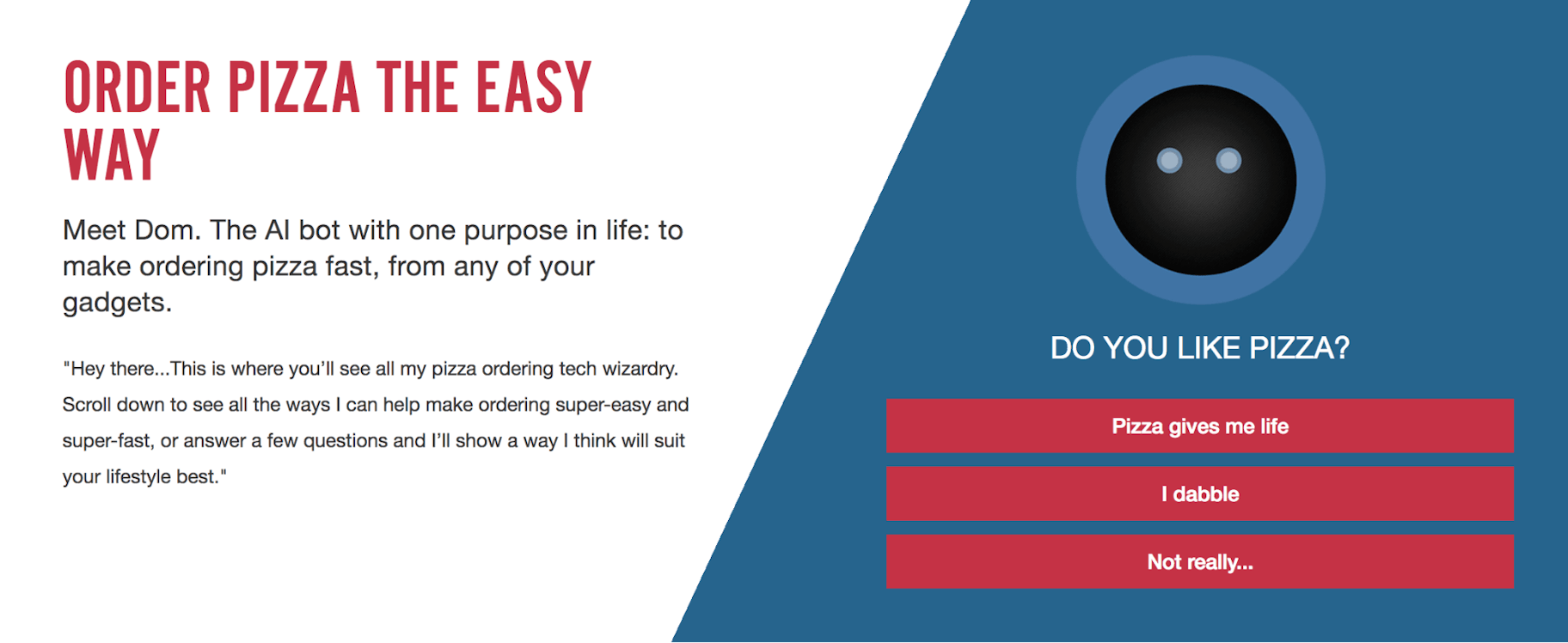
Just look at the way Domino’s explain their easy order service: “Setting up your Easy Order means I have your favorite order at the ready. All it needs is one click from you. Handy for when you’re exhausted from killing it at the gym, re-inventing the wheel or in the unlikely case that you just CBA typing.”
What’s more, in Google’s report on Gen Z, 26 percent of teenage shoppers said they expect retailers to offer a more personalized experience based on the customer’s shopping habits and preferences.
In comparison, only 22 percent of Millennials and 11 percent of Baby Boomers share that expectation.
One of the easiest ways to offer a personalized shopping experience is through email list segmentation.
As the writer and entrepreneur Deep Patel explained: “When executives use the acronym ‘ROI,’ they are using the typical meaning, which stands for Return On Investment. However, I think of it in terms of Return On Interaction. Putting resources toward relationships and engagement, and giving value to meaningful interaction — meaningful to them and you — will mean far more for your brand than any form of traditional advertising, marketing or communication.”
Ultimately, it’s vital to personalize shopping experiences and relate to Gen Z on a human level.
5. Optimize Your Mobile Experience
According to a survey by IBM, 75 percent of Generation Z selected a mobile phone or smartphone as the device they use most.
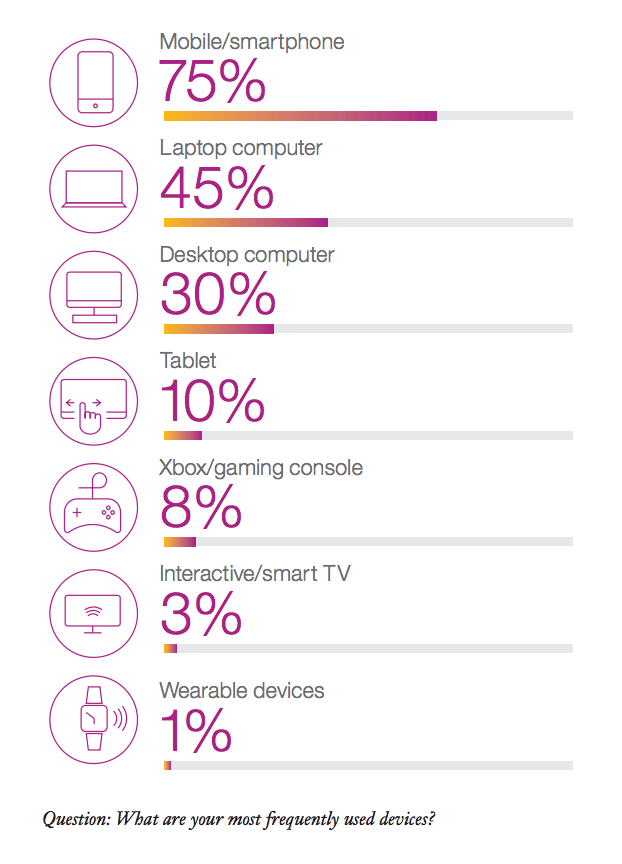
This makes sense when you consider how much younger an average Gen Z person was when they got their first smartphone compared to Millennials.
On average, teens today get their first phone when they are 12 or 13 years old. In comparison, those who are 25 to 34 years old, received their first smartphone when they were 20.
eMarketer analyst Mark Dolliver explains: “Part of the appeal of smartphone usage for people this age is that the phone is probably the first big-ticket item that has belonged to them personally.”
Plus, according to Google, Gen Z mostly uses smartphones to make online purchases.
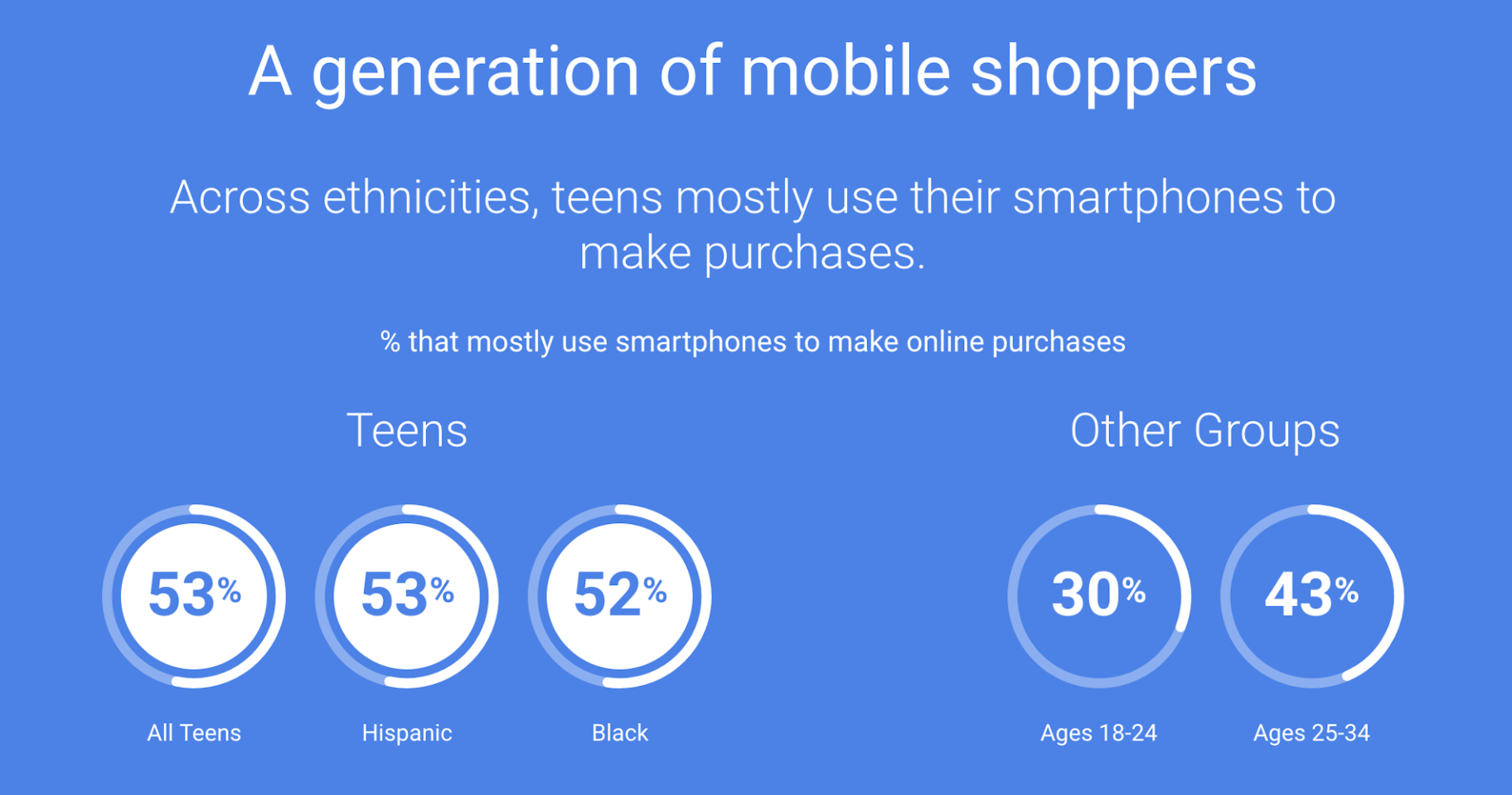
Not surprisingly, teens prefer shopping online in general.
According to another study by Google, the primary reason is convenience.
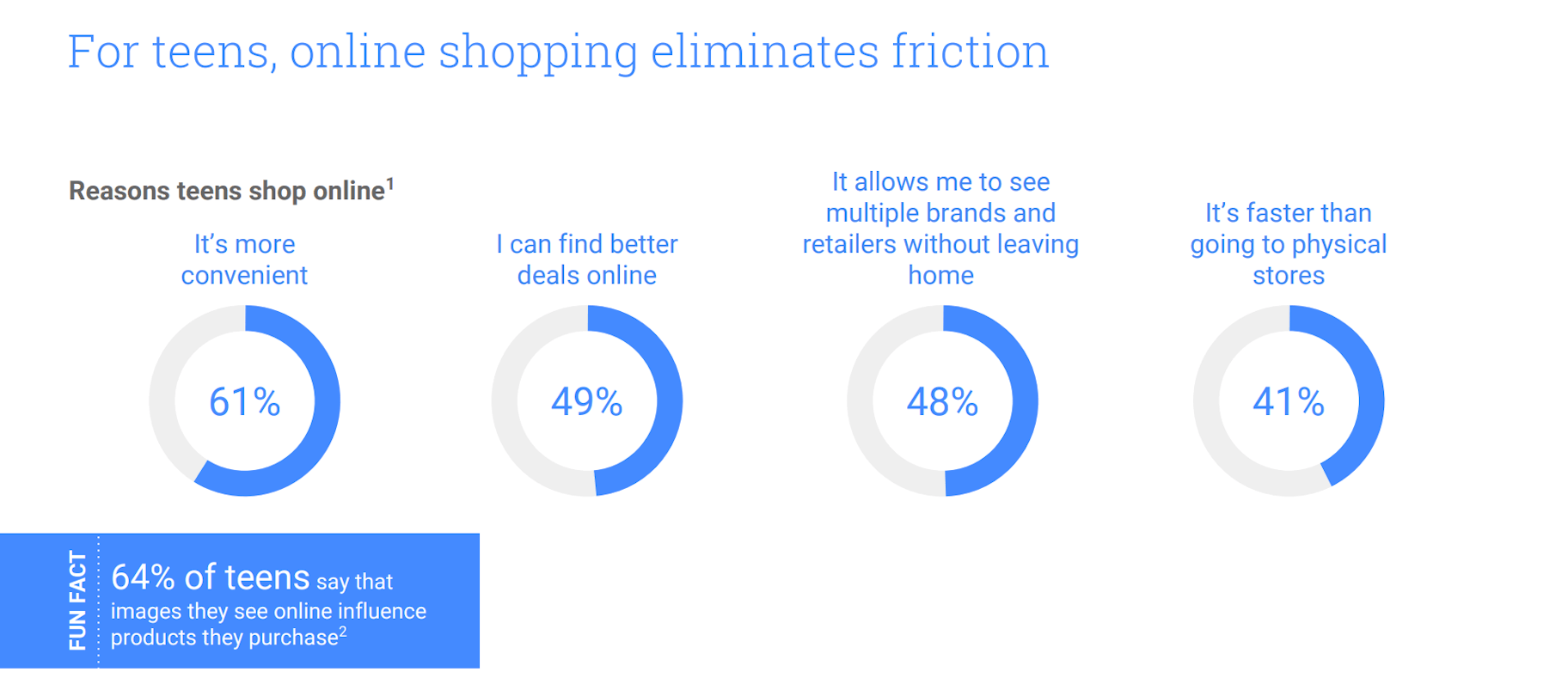
So businesses need to optimize for mobile devices.
This means using a mobile-optimized website theme, simplifying your checkout process, and creating content with mobile devices in mind, such as using vertical videos.
6. Understand That Gen Z Uses Social Networks Differently
Understanding how Generation Z uses each popular social media platform is crucial in creating content and ads that resonate.
Generation Z uses different social networking platforms for different activities.
According to a study recently conducted by Response Media, Generation Z:
- Showcase their aspirational selves on Instagram
- Share real-life moments on Snapchat
- Get the news on Twitter
- Glean information from Facebook
Plus, Market Wired revealed that Instagram is the most popular app for brand discovery, with 45 percent of teens using it to find new products.
And when it comes to shopping recommendations, YouTube is Generation Z’s platform of choice at 24 percent, followed by Instagram at 17 percent and Facebook at 16 percent.
Keep these social media trends in mind when creating content or ads targeting Generation Z on these social platforms.
7. Forget About Facebook and Focus on Snapchat
While they still use the site, 34 percent of US teens think Facebook is for “old people.”

Facebook lost over 25 percent of users between the ages of 13 and 17 in a period of three years.
Obviously, Facebook is still a legitimate way to reach Generation Z, but if you’re looking to up your game, you need to focus on Snapchat and Instagram.
According to the Taking Stock with Teens survey, Snapchat is overwhelmingly U.S. teens’ favorite platform at 45 percent, with Instagram coming in second place.
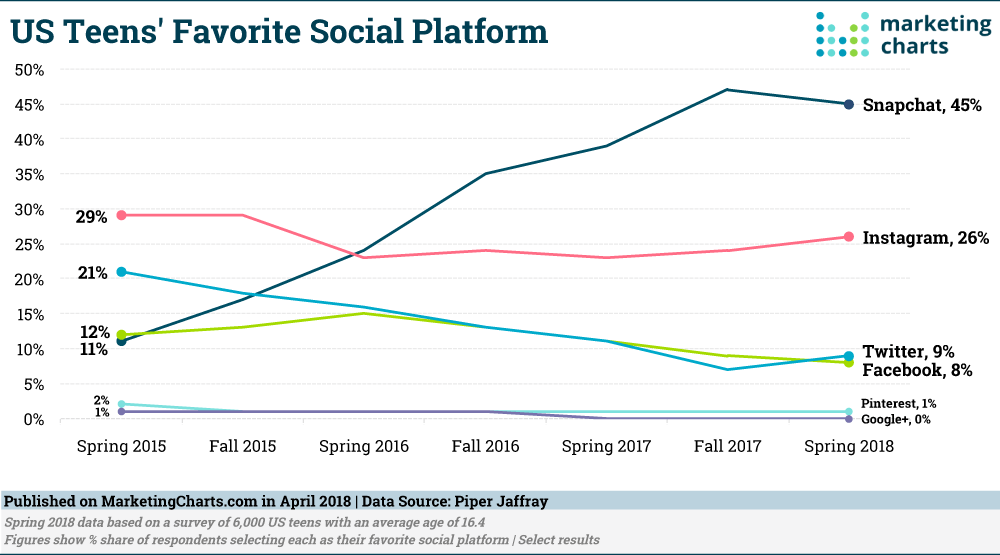
Furthermore, a massive 71 percent of Generation Z uses Snapchat on a daily basis, with 51 percent of this group using it about 11 times per day.
So when it comes to the generation after Millennials, forget about Facebook and start using Snapchat, Instagram Stories, and Instagram ads!
8. Create Snackable Content with a Focus on Video
The constant barrage of stimulus online is taking its toll.
The average attention span of a Millennial is 12 seconds, but it’s only eight seconds for Generation Z.
This is less than goldfish.
Additionally, Gen Z uses more digital platforms simultaneously.
Millennials typically bounce between three screens at the same time, while Generation Z use five screens at the same time.
So what does this mean for marketers?
Well, because of their shorter attention spans and desire for constant stimulation, people in Generation Z loathe non-skippable ads and pop-ups and avoid long-form content.
In fact, on average, Generation Z clicks “Skip” on skippable video ads after only 9.5 seconds. Meanwhile, Generation X wait 12.6 seconds.
So when targeting Gen Z with video ads, it’s best to use a short format like YouTube bumper ads, which are restricted to a mere 6 seconds.
Plus, avoid long-form content that’s difficult to consume (such as 3,000-word blog posts like this!).
Instead, opt for snackable content formats. Once again, this is where channels like Snapchat, Instagram Stories, or Facebook Stories can help.
These content channels are especially effective because Gen Z loves video. So, if you’re targeting Gen Z, pay special attention to video marketing.
Specifically, 71 percent of 13 to 17-year-olds spend more than three hours a day watching online video on their smartphones.
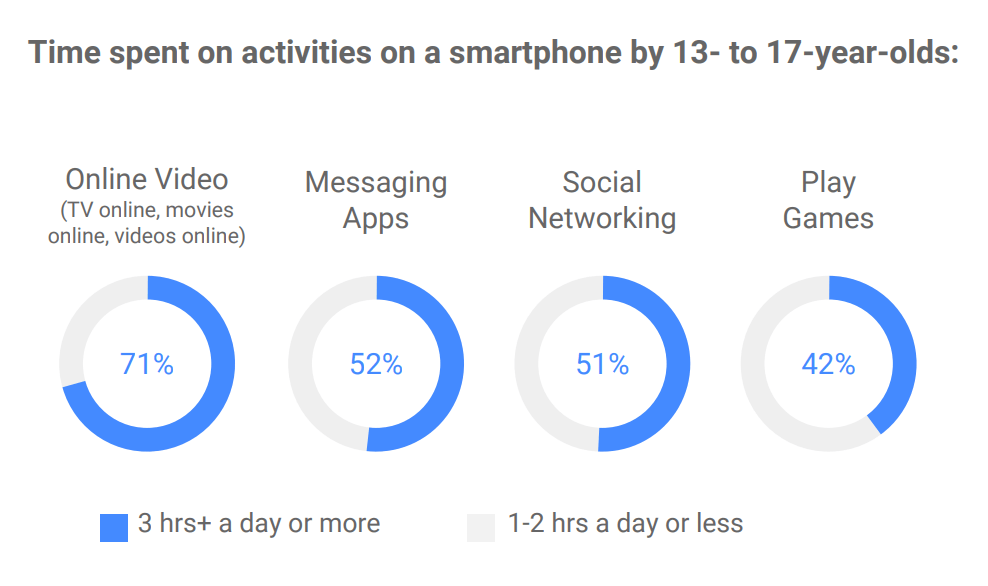
9. Highlight Your Dedication to Privacy
Gen Z is keen to protect their privacy.
In fact, according to NGen, 88 percent of Generation Z agreed with the statement “protecting my privacy is very important to me.”
Generation Z intuitively understands that what goes on the web, stays on the web.
According to IBM’s survey Uniquely Gen Z, less than one-third of teens say they are comfortable sharing personal details other than contact information and purchase history.
However, the same study revealed that 61 percent would feel better sharing personal information with brands if they could trust that it was being securely stored and protected.
This is where businesses need to step up.
Whenever you attempt to collect information from Generation Z, do so with transparency and make sure to highlight your commitment to keeping their data safe and secure.
What’s more, Gen Z also prefers to “create more anonymous and more private content through apps like Snapchat, Whisper, Yik Yak or Secret. We still post what we are up to, but we are very selective about who sees it as well as how long it is posted.”
So brands should focus on private and direct channels like Facebook Messenger and Snapchat to connect one-on-one with Gen Z.
10. Partner with Micro-Influencers
Influencer marketing is a powerful way to build your brand and business. And with Generation Z, the potential is huge.
In fact, Google found that 70 percent of teenage YouTube subscribers relate to YouTube creators more than traditional celebrities.
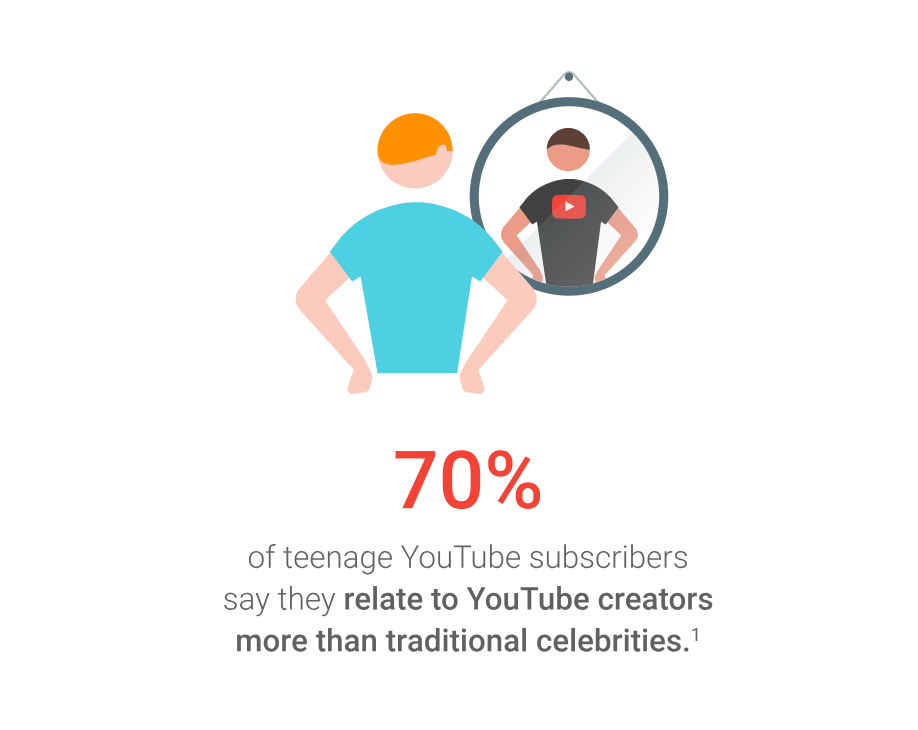
But that’s not all.
Research from Fullscreen revealed that over 44 percent of Gen Z respondents tried a recommendation from a “digital creator” (defined as someone who garnered fame entirely online), compared to just 36 percent who’ve tried products promoted by celebrities.
This is great news for small businesses because these influencers are far more accessible than celebrity influencers.
So reach out to micro-influencers in your niche.
The average influencer earns $300 per sponsored post, but many smaller influencers will be happy to promote your product in a video or social media post in exchange for a free sample.
Consider offering the influencer three samples – one for themselves and two to use in a giveaway or competition for their followers. That way, everybody wins: You receive promotion, they get free stuff and the opportunity to reward their followers, and their audience get the chance to win products!
Challenges When Marketing to Generation Z
Marketing to Gen Z can come with a set of challenges, but don’t let them discourage you. Just like marketing to any other generation, these challenges can be overcome once you’ve familiarized yourself with them. So let’s take a look at some of the main challenges that you might have to face when marketing to Generation Z.
- Generation Z has a short attention span.
Generation Z has an attention span of about 8 seconds. That’s a few seconds shorter than the attention span of Millennials, which is about 12 seconds. This means that when it comes to marketing to Gen Z, every moment counts. You’ll have less time to grab their attention, and you want to make sure that you use your time carefully. To tackle this challenge, marketers need to make sure that the content targeted toward Gen Z is captivating enough to keep their attention. So skip any lengthy, unnecessary introductions. After all, you’ll only have about 8 seconds to convince them that your content is worth the watch. - Generation Z is constantly moving between devices.
Coupled with a short attention span, marketing to Gen Z can be a challenge if you aren’t already familiar with their preferences. Generation Z was born and raised in a world where the presence of technology and the internet was the norm. It’s the generation with the highest number of technological devices around them, and that’s why it’s no surprise that they’re constantly jumping from one device to another. Where Millennials bounce between three screens at one time, Generation Z can use up to five screens at the same time. With them constantly switching between devices, it can be challenging for marketers to know how to reach them at the right moment, in the right way. - Generation Z isn’t scared to share their opinion.
Gen Z is bold. They’re not afraid to tell you that your ad is terrible. They’re vocal about their thoughts and that includes what they think about your advertisement. Generation Z consumers were raised in a world of personalization, and they expect marketers to customize the experience to meet their individual needs. And good or bad, they’ll probably be sharing their opinion on social media. That’s why when marketing to Gen Z it’s important to remember to be more receptive and open to criticism.
Now, you might be wondering:
What Comes After Generation Z and What Generation Am I?
The generation after Gen Z is currently referred to as Generation Alpha.
This includes anyone born from around 2013 to 2030. Generation Alpha is set to come of age from about 2030 to 2040.
What about other generations?
Well, although there are no precise dates when defining generations, here’s a basic description of each generation alive today:
- Generation Z: Teenagers
- Millennials: Young professionals
- Generation X: Mature professionals
- Baby Boomers: Retirees
- Silent Generation: Elderly retirees
- G.I. Generation: Those born just after the turn of the 20th century
The image below from ThoughtCo helps to illustrate these generations:
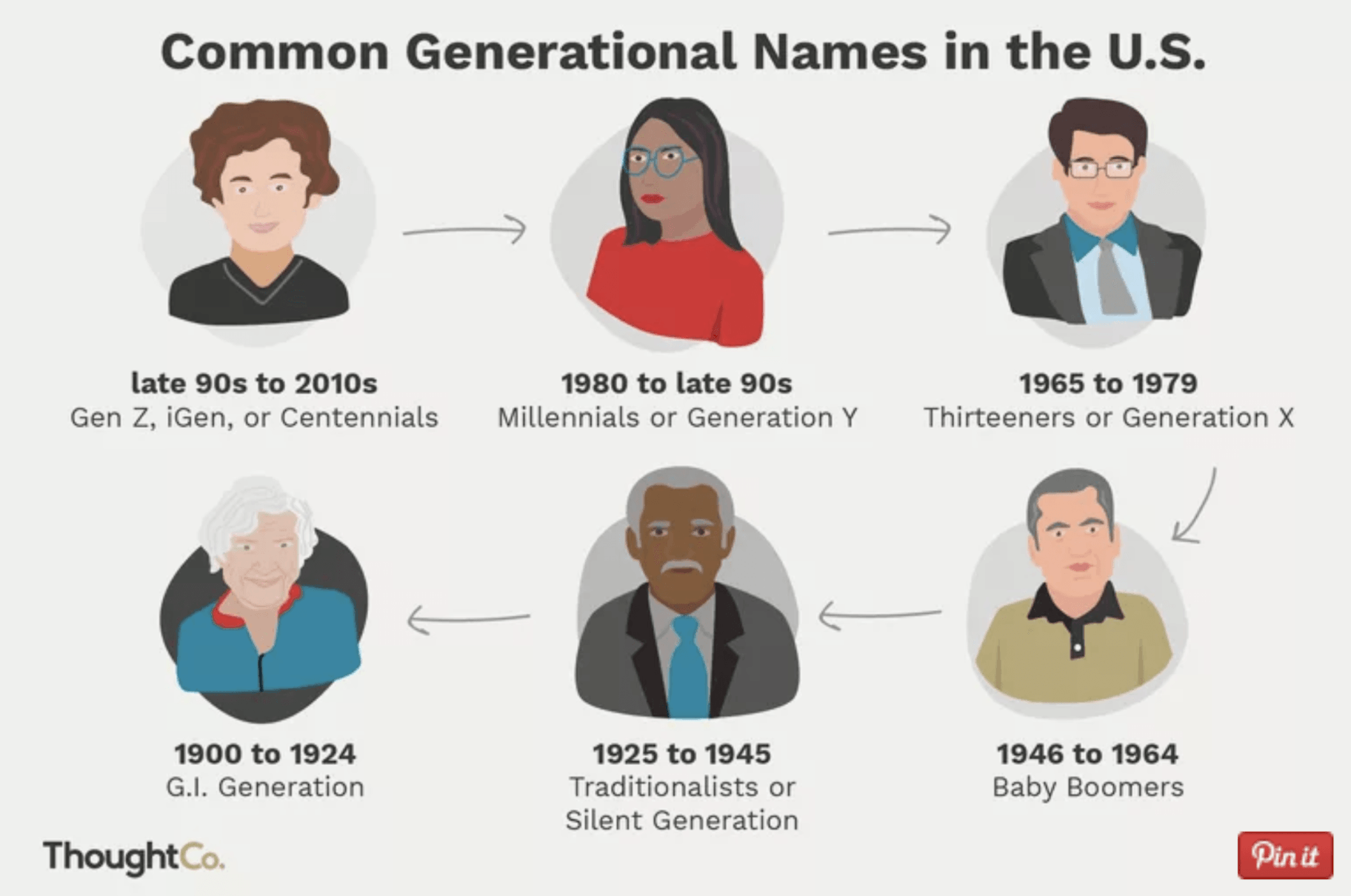
Summary
Generation Z is the next big opportunity for businesses.
They have an estimated $200 billion in spending power today, and this will continue to grow as more of Gen Z enters the workforce.
Remember:
- Gen Z cares about improving the world and actively chooses brands that work to make the world a better place.
- Authenticity and meaningful interactions are also extremely important to Gen Z. So focus your efforts on connecting and communicating in a personal, relatable way.
- The generation after Millennials also cares about maintaining their privacy online, shunning open networks like Facebook in favor of direct messaging apps like Snapchat.
- Gen Z spend most of their online time watching videos on their mobile devices, so grow your brand reach with channels like YouTube and Instagram Stories. And partner with micro-influencers, as they hold more sway than celebrities over Gen Z.
- And lastly, Gen Z has an increasingly short attention span. So get to the point quickly, avoid long ads, and create snackable content.
Have you had any success marketing to Gen Z? Let us know in the comments below!






